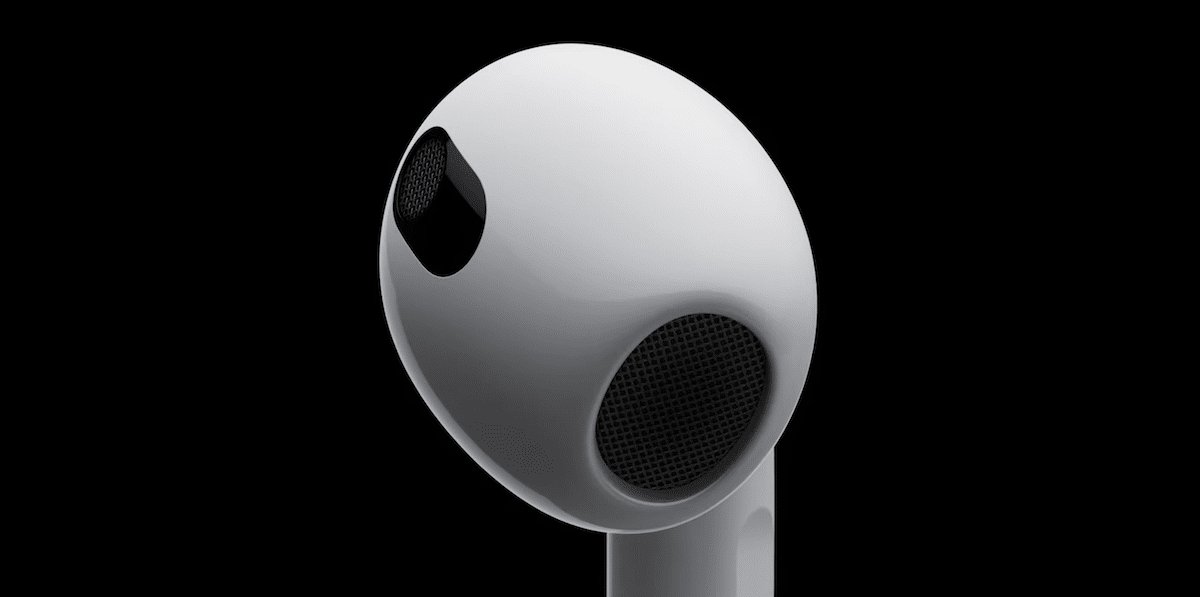Apple executives sat down with What HiFi for an interview to talk about AirPods 3 and the bandwidth limitations of Bluetooth.
Gary Geaves, Apple’s VP of Acoustics, and Eric Treski from the Product Marketing Team spoke to What Hifi about the thought process behind AirPods 3, and how the company works around the limitations of Bluetooth.

Apple executives talk AirPods 3 and Bluetooth
Regarding AirPods 3, Geaves explained how the new wireless headphones have been completely remade using custom components, including support for Spatial Audio.
The AirPods 3 were essentially built from the ground up, using custom-made components. “Nothing’s off the shelf”, as Geaves puts it. That includes the “very low distortion” loudspeaker, which is integrated into “quite a complicated acoustic system” that regulates the movement of the speaker, minimises pressure in the ear canal and features a “carefully tuned bass port”. The AirPods 3 also feature a “brand new, custom amplifier” that apparently combines high dynamic range with very low latency (which is particularly crucial for head-tracked Spatial Audio) and serious power-efficiency.
The design of AirPods 3 was also inspired by the original AirPods and their beloved open fit. This is different from AirPods Pro, which create a tight seal in the ear.
“We started with looking very closely at the strengths of the original AirPods”, Geaves explains, “and we know many people really like the effortless open fit that doesn’t stick into your ear canal and rests comfortably on your ear. That doesn’t create a seal, which is what people like, but it creates challenges for the audio team”.
Due to the open fit design, it is important to engineer the headphones in a way that users are able to experience a consistent sound. To achieve this, Adaptive EQ from AirPods Pro was added to AirPods 3. This helps tune the output and ensure a consistent experience.
This is where Adaptive EQ, which was first introduced with the AirPods Pro, comes in: “we’ve added an inward-facing microphone”, says Geaves, “which continuously monitors what’s being played by the speaker and tunes the bass and, to some extent, midrange frequencies as well, to deliver a really consistent frequency response regardless of the level of fit that each person gets”. The idea is that everyone hears the music the same way, and the way the artist intended.
As AirPods still use Bluetooth, they do not support lossless audio, which is a major dealbreaker for users who want the compact design and utility as well as the full benefits of Apple Music, which include free lossless audio. Geaves recognizes this and shared that they use a number of tricks to get around the limits of Bluetooth, and would like more bandwidth, but this is the extent to which he spoke on this.
“Obviously the wireless technology is critical for the content delivery that you talk about”, he says, “but also things like the amount of latency you get when you move your head, and if that’s too long, between you moving your head and the sound changing or remaining static, it will make you feel quite ill, so we have to concentrate very hard on squeezing the most that we can out of the Bluetooth technology, and there’s a number of tricks we can play to maximise or get around some of the limits of Bluetooth. But it’s fair to say that we would like more bandwidth and… I’ll stop right there. We would like more bandwidth”, he smiles.
What Hifi believe that Apple might have a plan for overcoming Bluetooth’s current limitations, however, we would not know for sure until the company announces anything.
Check out the complete interview over at What Hifi.